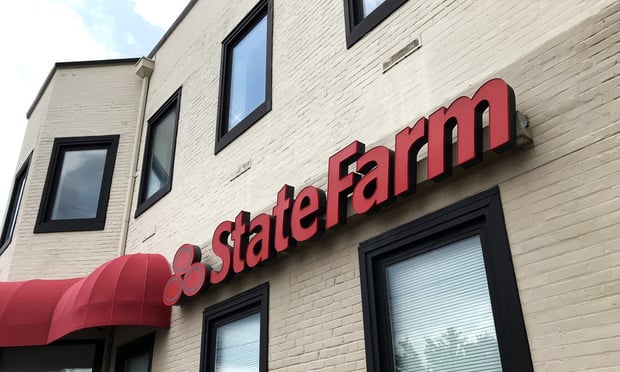
Editor's Note: Anthony Natale III is a shareholder in the Workers' Compensation Department at Marshall Dennehey Warner Coleman & Goggin.
Workers' Compensation fraud has reached epidemic proportions within the United States, costing legitimate employers, employees and healthcare providers millions of dollars per year. The landscape of this fraud is ever-changing; no longer is it limited to employees exaggerating workplace injuries or working for cash while collecting workers' compensation benefits. More recent schemes involve employers under-reporting payrolls to receive lower workers' compensation premiums, or incorrectly classifying employees to save insurance costs. Throw in unscrupulous medical providers billing for services they never performed, and it's no wonder that healthcare and medical care costs are so egregious.
The result of these and other fraudulent activities is that businesses and much-needed jobs are often forced out of regions that operate under high workers' compensation costs. In some cases, in an effort to offset these costs, businesses may be forced to increase the price of goods and services, thus impacting local economies. These activities also serve to create an environment that results in unnecessary delays in the processing of legitimate claims that can affect an injured worker's ability to obtain crucial medical treatment for true workplace injuries.
To effectively compete in this new business world, employers are attempting to shift the burden of workers' compensation costs to entities known as Professional Employer Organizations (PEOs). According to the National Association of Professional Employer Organizations (NAPEO) there are an estimated 700 PEOs in operation throughout the 50 states. While PEOs undoubtedly have rescued employers from the high costs associated with the administration of workers' compensation programs, their very existence has also set the stage for the emergence of PEO-related workers' compensation fraud. With acknowledgement to the fact that the overwhelming majority of PEOs are legitimate, law abiding companies, the emergence of fraud in this arena should put employers on alert when contemplating entering into the PEO arrangement.
WHAT IS A PEO?
A PEO is an entity that contractually assumes various employer rights and human resources responsibilities through the undertaking of an “employer relationship” with workers either assigned to or hired by its clients (employers). In short, the PEO and the employer/client share an employment relationship that allows the PEO to handle and manage employee-related matters such as payroll, benefits, tax matters and, in many cases, workers' compensation programs, thus allowing the employer to concentrate on the operation and revenue producing aspects of its business. This relationship has become so commonplace that various states actually recognize PEOs and their clients as “co-employers.”
This co-employment relationship has been summarized by NAPEO, in part, as a contractual relationship whereby the PEO:
- Co-employs workers at the client locations and assumes responsibility as an employer for specified purposes;
- Reserves a right to direct and control these employees;
- Pays wages and employment taxes of the employee out of its own accounts;
- Reports, collects and deposits employment taxes with the state and federal authorities;
- Establishes and maintains an employment relationship with its employees that is intended to be long-term and not temporary; and
- Retains the right to hire, re-assign and fire the employees.
Recognizing the potential for fraud that could arise from the co-employer shared relationship, some states have enacted legislation that further defines a PEO relationship and undertakes management protocols for these entities. The majority of states, however, have failed to enact or enforce legislation that would protect employers from PEO fraud or misrepresentation.
POTENTIAL FRAUD ISSUES
When an employer outsources its workers' compensation coverage responsibility to a PEO, it is entrusting that all insurance requirements will be fulfilled by the PEO. This means that the PEO will be responsible for classifying employees, communicating payroll to insurers, selecting appropriate coverage and paying premiums. This also presupposes that the PEO is familiar with the local workers' compensation statutes and regulations. Unknowingly, some employers may willingly shift this burden to the PEO without securing contractual evidence of the PEO's rights and duties. What's worse, these same employers may rely on an ambiguous contract drafted by the PEO which does nothing to protect the employer's interests. Unfortunately, the lack of a clearly defined, written contract between the PEO and employer can not only lead to fraud or misrepresentation by the PEO, but also can negate the existence of a valid PEO relationship in states that require a written PEO contract.
When an employer is contracted with a PEO and a workers' compensation claim is filed, questions often arise as to whether appropriate insurance has been maintained, if there is documentary evidence available to support the PEO's responsibility to defend the workers' compensation claim and even, sometimes, whether the PEO is fiscally solvent. There have been cases where a “fly by night” PEO is saddled with liability by a workers' compensation judge and simply fails to pay benefits. Under such circumstances the employer would likely be liable for the injury and could be put into a situation where no insurance exists, thus exposing employers to criminal liability in certain states.
The fact that the PEO and its employer-client are viewed as co-employers in the workers' compensation system has a perceived advantage. From a theoretical standpoint, an employer can farm out its workers' compensation coverage while keeping the protection of tort immunity. It follows that in the PEO relationship, where the PEO and the employer both share the right to control the employee, both technically possess the right to assert tort immunity. However, this has not stopped a number of lawsuits naming the employer as a third party tortfeasor after a workers' compensation injury, which has led some states to create specific statutes related to workers' compensation that govern PEO contracts and tort immunity. If an employer is unaware of these statutes and if the PEO does not strictly adhere to the provisions of the statute, the alleged “PEO relationship” may not be binding and the employer could face expensive litigation to prove that tort immunity applies or that a PEO co-employer relationship even exists.
PROACTIVE RISK MANAGEMENT
The emergence of incidents of PEO fraud in relation to workers' compensation matters provides a cautionary tale for employers considering entering into the PEO arrangement. Employers should be aware of statutes in certain states that require a PEO to define its contractual obligations and the protocols by which the PEO is to be managed through a “Professional Employer Agreement.” For employers operating in states without such legislation, it is important to insist on a written contractual agreement with the PEO, drafted in unambiguous language that is understood and agreed upon by both parties at the start of the co-employment relationship. Within this contract, a provision as to the allocation of workers' compensation coverage must be included. Further, the employer must have the contractual ability to request and secure proof of workers' compensation coverage from the PEO. The contract should also provide employers with access to the loss history and total wages paid for covered employees. Operating in this fashion will ensure that the employer is engaging in an environment that is free from potential PEO fraud.
Anthony Natale III is a shareholder in the Workers' Compensation Department at civil defense litigation firm, Marshall Dennehey Warner Coleman & Goggin. Resident in the Philadelphia office, Natale has exclusively focused on the defense of workers' compensation claims since 1995. He may be reached at 215-575-2745 or [email protected].
Want to continue reading?
Become a Free PropertyCasualty360 Digital Reader
Your access to unlimited PropertyCasualty360 content isn’t changing.
Once you are an ALM digital member, you’ll receive:
- Breaking insurance news and analysis, on-site and via our newsletters and custom alerts
- Weekly Insurance Speak podcast featuring exclusive interviews with industry leaders
- Educational webcasts, white papers, and ebooks from industry thought leaders
- Critical converage of the employee benefits and financial advisory markets on our other ALM sites, BenefitsPRO and ThinkAdvisor
Already have an account? Sign In Now
© 2025 ALM Global, LLC, All Rights Reserved. Request academic re-use from www.copyright.com. All other uses, submit a request to [email protected]. For more information visit Asset & Logo Licensing.








